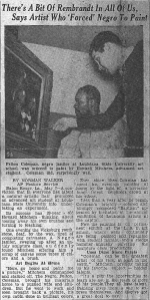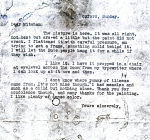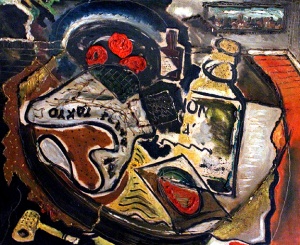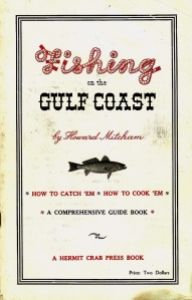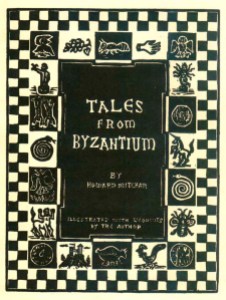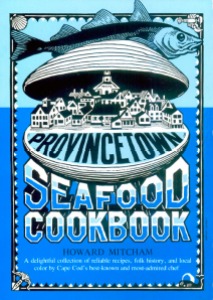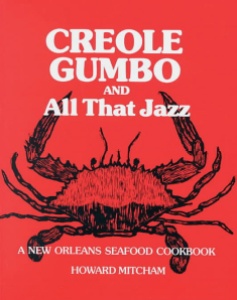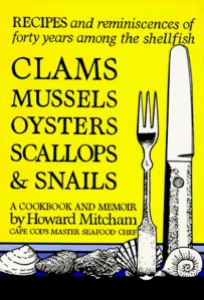“For reasons best known to ourselves,” Hodding Carter, Ben Wasson and Kenneth Haxton decided “one low-water night some time back” to organize “still another addition to the multiplicity of publishing houses whose directors dream of an America that will some day read instead of write.”
Their brainchild, Levee Press, ranks with the Webbs’ Loujon as a distinguished “small press” in the South. Though its output was miniscule by any standards—only four publications in roughly that many years totaling somewhat less than 3000 copies (2635 “official” count)—Levee Press imprints command a significant price among an elite of discerning bibliophiles because the names of the four authors—Foote, Welty, Faulkner and Percy—resonate in the state, the region and the world. Had Levee Press maintained production at such a level of quality, the Greenville publishing house could very well in time have become one of the premiere imprints in the nation, but indifference, dissent, certainly some combination of the two—melded to bring an end to it.
———–
In the late 1940s, during the “golden age” of Mississippi literature, the output was phenomenal, with Welty and Faulkner as cynosures in a stellar flurry of belles lettres including works from Carter himself, who had commandeered the Greenville Delta Democrat-Times—as he had the Hammond Daily Courier—into a newspaper of integrity and distinction, an achievement acknowledged by the Pulitzer jury that awarded him the prize for editorial writing in 1946. Hodding was at the peak of his career; his reputation as a capable spokesman for a progressive South was solidly entrenched across the nation. Ben Wasson, who had worked in New York theater with Leland Hayward and acted as Faulkner’s first literary agent, wrote on the arts and as a literary critic for the newspaper. Kenneth Haxton, a composer and husband of National Book Award nominee Josephine Ayers Haxton, who wrote under the surname Ellen Douglas, worked full-time at his family’s department store, Nelms and Blum’s (his mother was a Blum), where he had installed a bookstore. Carter also had young Shelby Foote working for him at the Delta Democrat-Times then, and while Hodding can dryly drawl about the enterprising intentions of him and his cronies in their cups, it was Foote who came up with the idea to publish a book using the resources of the Delta Democrat-Times.
Shelby Foote grew up in Greenville alongside his fraternal friend Walker Percy under the patriarchal wing of planter/poet William Alexander Percy. Foote, like Walker, had literary ambitions which in time both realized, but in early 1947, Foote had just turned 30, had only one major work in progress (Tournament), and his expenses were mounting. Apparently quite on his own initiative, he decided to print and publish his own work with the limited resources of the Delta Democrat-Times print shop. Since his enterprise just happened to mesh with their own previous plans to publish books in the hub of the Delta, Ben Wasson, representing Hodding Carter and Kenneth Haxton, asked Foote if he would add the name “Levee Press” to the pamphlet they had heard he was planning to print. “We gonna call it the Levee Press,” Wasson said, nodding out the window at the earthworks against the river.
From within the Tournament manuscript, Foote excised the grim story of Abraham Wisten, the tragic story of an ambitious Jewish immigrant, entitled it The Merchant of Bristol and hired co-worker Bill Yarborough to typeset and print 260 copies of the 20-page novella on June 2, 1947. 
———–
Writing in the Commercial Appeal on July 6, 1947, columnist Paul Flowers announced, “Freshest literary venture in the South today is the Levee Press at Greenville, Miss. (there’s always something going on among the literati of Washington County.) The Levee Press is the idea of a group of writers, for the perpetuation of stories, essays, and other literary material which may not have enough general interest for publication on a national scale, but too good to be forgotten… Shelby Foote broke the ice with a short story, published in pamphlet form, and 250 copies, each one numbered and autographed, went out to persons who had subscribed. The project is non-profit and there’s no incentive except to keep alive bits of writing which ought to live. More small volumes will be coming from the Levee Press. It will not be commercial, and no one connected with it is looking for material gain (except Foote, of course: JY) However, most, if not all of its insiders are welling manuscripts in the open market, but they will publish at home, just for collector’s items some of the pieces nearest their hearts.” Flowers doubtless received this description of the Levee Press’s objectives from Hodding Carter himself by way of promotion, and perhaps this is an echo of the “reasons best known to ourselves” that he referred to some six years later in Where Main Street Meets the River, where he claimed—again, after the fact—that the purpose of the Levee Press was to “publish limited, signed editions of new, relatively short books—“novella” sounds better—by established Southern writers.”
With the publication of A Curtain of Green (1941) and The Wide Net and Other Stories (1943), Welty had garnered three O. Henry awards and a Guggenheim fellowship, which made her a clear candidate for publication with the Levee Press. Wasson “brazenly” asked Welty if she would permit the new publishing firm to issue one of her manuscripts as a book and had told her the plans for the new press. In Count no ‘Count, Wasson recounts, “The great and gracious lady replied that she approved of such a venture, that Mississippi needed a limited editions press, and that, as it happened, she did have a manuscript. It was a novella, Music from Spain.” In December, 1946, Welty traveled to San Francisco to visit her friend and ofttime paramour John Robinson, rented her own apartment there in January and between then and March wrote a lengthy story, “Music from Spain”. The story stands at somewhat of a distance from the body of Welty’s oeuvre because it is set outside of Mississippi, in San Francisco, its narrative is stream-of-consciousness and it is distinctly erotic—indeed, homoerotic— a daring element in a work for publication in Greenville, Mississippi in the late 1940s. After contacting Welty’s agent, Diarmuid Russell, Carter and company contracted Welty for 750 copies was agreed to give her 25 per cent of the $2.50 price—Wasson claims $4—in exchange for non-exclusive rights to “Music from Spain”.
When Ben Wasson proposed that Levee Press “do a Faulkner”, the other two laughed. Even though Faulkner in 1946 was one of three finalists for the first Ellery Queen Mystery Magazine Award (second to Rhea Galati), he was by most other standards the single most important Southern American writer of his day, but Wesson had a card up his sleeve. Not only had he been Faulkner’s agent when Faulkner was struggling to publish Flags in the Dust, but it was Wesson who for fifty dollars a week pared down Faulkner’s novel for the demands of Harcourt, Brace. For two weeks, while Faulkner sat nearby writing The Sound and the Fury, Wasson cut almost a fourth of the book, and Harcourt, Brace published the truncated version on January 31, 1929, as Sartoris. Some might say that Ben Wesson was calling in a debt, but for whatever reason, in late February, 1948, Wesson traveled with Carter to Oxford for an evening at Rowan Oak. Faulkner, “at-first-reticent”, gradually warmed his visitors, who left with an original manuscript, a “horse race piece” Faulkner suggested they call “A Long Dangling Clause from a Work in Progress.”
On March 1, Faulkner reported his commitment to his agent, Robert K. Haas: “Hodding Carter and an old friend of Mine, Ben Wasson, have what they call the Levee Press, at Greenville, Miss. Three times a year they get out an issue, which is sort of a colophon thing: a single story or article, limited number. I am letting them have the section of the big mss. Which Ober offered to Partisan Review and was declined. It will resemble a special edition pamphlet, bound of course, signed by me, to sell at $2.50. I get 25%. This is all right with Random House, isn’t it? The section is about 80-100 pages typescript. They will call it Section (of from) Work in Progress. I think. I want to do it mainly to confound the people who say nothing good out of Miss. The Press is less than a year old, is already getting known even though in slightly precious circles, like Yale reviews etc. Its foundation is Carter’s Greenville daily newspaper. His name is familiar to you, probably: lecturer, liberal, champion of Negro injustice though no radical, no communist despite Bilbo and Rankin.”
———-
So it was with these commitments an announcement was made in the Commercial Appeal on May 2, 1948: “The Levee Press probably will be doing some celebrating about that time also (2nd week in May with publication of Cohn’s Where I Was Born and Raised), announcing books by Eudora Welty and William Faulkner, to be issued by the Greenville house. That won’t hurt the Levee Press, either, starting off with a pair of names such as Welty and Faulkner, for those are two writers highly esteemed in the English speaking world. The Levee Press may turn into an important venture in the American publishing world. It got off to a modest beginning about a year ago with a short story by Shelby Foote.”
For the Welty book, Carter stepped up his game considerably. Always the consummate newspaperman, he purchased a Jansen type plate that he had admired in certain Knopf publications. With no local bindery available, he contracted that job to a publishing company in Texas Dickens.
———-
Though Levee Press’s relationship with Eudora Welty is undocumented, Faulkner’s exchanges are unsurprisingly high-profile, with vibrant accounts provided by both Carter, in Where Main Street Meets the River and Wasson, in Count no ‘Count, given that the author was awarded the Nobel Prize during the publishing process. Carter, Wasson and Haxton shortened the title of the Faulkner manuscript to Notes on a Horsethief. “It was good,” Carter claimed, “even though a few readers have since complained that they never before had read thirty thousand words divided into only three sentences.” Again, Levee Press extended its resources for Notes on a Horsethief. Elizabeth Calvert’s flowing, linear artwork for the rich, Sherwood green cover and the endpapers, described by Jean Stein as “horses in flight”, are striking and dramatic. Horsethief is arguably Levee Press’s highest achievement both in terms of art and letters.
Notes on a Horsethief was printed on November 4, 1950, and the following January, on the 23rd, Estelle Faulkner phoned Carter, telling him that her husband had decided that there was no sense in unpacking the nine hundred and fifty books he had received the month before for signing only to ship them right back, and he had put the unopened crate in his station wagon early that morning and was on his way to Greenville.
Notes on a Horse Thief was published scarcely a month before Faulkner accepted the Nobel Prize Stockholm’s City Hall on December 10, 1950. The nine hundred copies sold out quickly, and soon copies were selling for as high as $25 in. Irving Howe, reviewing this “privately printed and fabulously pieced story” in The Nation, said it was “a bad piece of writing,” but Charles Poore in the New York Times Book Review, called it “at once a brilliantly told story of a manhunt and a subtly woven allegory on man’s fate.” Notes later became a section in Faulkner’s much-belated Pulitzer winner, A Fable, with gracious thanks from the author to Levee Press for permission to reproduce the material.
———-
Choosing the next work to be published proved problematic; Carter, Wasson and Caxton intimated later that it had nver been their intention to publish Mississippi writers exclusively, but in the end it just turned out that way. In fact, Carter was considering publishing a book of poems by John Gould Fletcher of Arkansas that had been turned down by his New York publisher, but at the last minute the decided to print them after all. Wasson wrote to Flannery O’Connor, Carson McCullers and Robert Penn Warren, but none had a manuscript of suitable length ready for publication. Writer and photographer Carl Van Vechten, who Gertrude Stein had appointed her literary executor, sent some unpublished works by her, but the three principals of Levee Press found them so mystifying that they returned them, regretfully, to a subsequently indignant Van Vechten. Unknown writers (including Greenville son Howard Mitcham jly) submitted hundreds of manuscripts, but none of them seemed good enough.
The shadow of William Alexander Percy looms large in Greenville, and Carter, Wasson and Haxton all knew the man well and admired him immensely. Percy died in 1942, and Knopf published The Collected Poems of William Alexander Percy in 1943, with a second edition the following year. Yet Ann Stokes, who claimed to have worked with Percy in editing the poems for the collection, claimed that she had variant forms of some of the published poems that should be printed, and insisted with no small degree of persistence that Hodding Carter publish these poems as well. Carter felt some degree of obligation to Stokes, who sold him the land on which he had built his new Feliciana house. Ben Wasson thought publishing Percy’s poetry was redundant and the book would not sell, and Carter, while engaged in a lengthy and complicated correspondence with Alfred Knopf, whose company held the copyright to the Percy poems, actually went so far as to ask Knopf to deny him permission to reprint the poems, Knopf consented, giving Carter no excuse to refuse Stokes’ nagging.

———-
Although Ben Haxton placed “The Levee Press” on the title page of his 1997 work The Undiscovered Country as a tribute to the spirit of the enterprise he shared with Carter and Wasson, Of Silence and of Stars proved to be the last book issued by Levee Press. Carter toyed with the idea of publishing “lost literature” of the South, particularly a stirring antebellum courtroom plea that Natchez lawyer Sargent S. Prentiss made in a Kentucky court to save the lives of three Mississippi planters involved in a bloody brawl while attending a wedding, this idea never came to fruition, and after failing to get a manuscript from Tennessee Williams, the Levee Press passed out of existence. Carter, Wasson and Haxton all had other, more pressing involvements, and Wasson, evidently the principal behind the publishing venture, clearly lost interest after the Percy work was foisted on the house.




